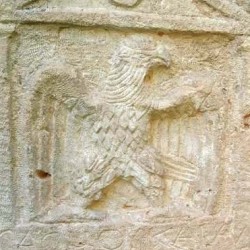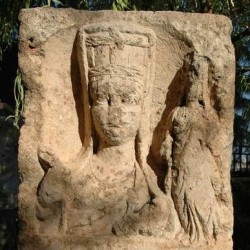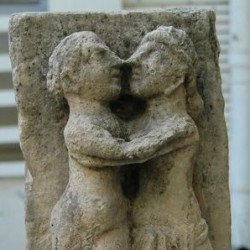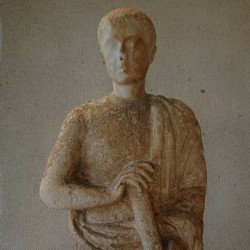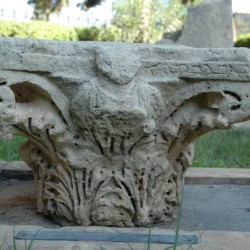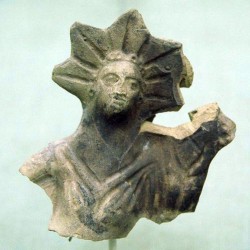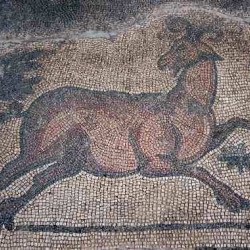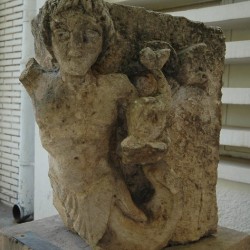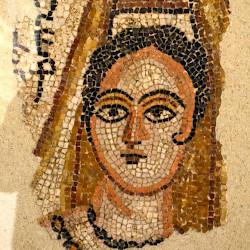Edessa (Şanlı Urfa)
Q133118Edessa or Urhai: ancient city in northwest Mesopotamia, capital of Osrhoene, modern Şanlı Urfa in Turkey.
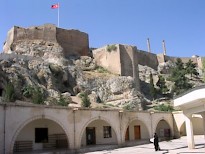
The origins of Edessa are not entirely clear, but its original name, Urhai, may suggest connections with the Hurrians, a nation (or linguistic community) in eastern Anatolia and northern Mesopotamia as early as the late third millennium BCE. Urhai must have belonged to the powerful kingdom of Mitanni, which controlled in c.1400 the entire region between the Mediterranean and the Zagros. Although Mitanni disappeared from the scene, and northern Mesopotamia was divided between the Hittites in the west and Assyria in the east, the Hurrian language was still alive in the seventh century BCE, when it was slowly replaced by Aramaic.
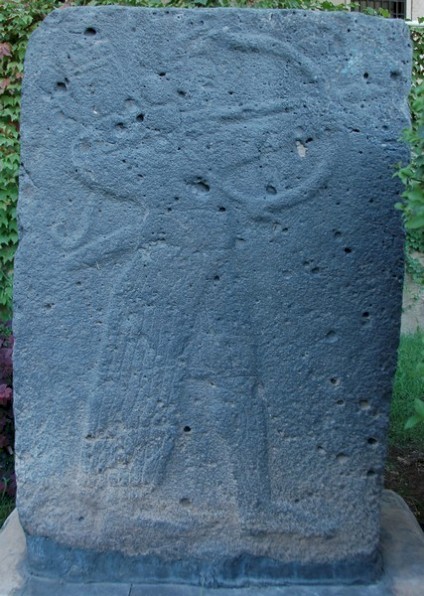
It is possible that Urhai is identical to the city of Kaprabi in the Aramaic-speaking kingdom of Bît-Adini, which was captured by the Assyrian king Aššurnasirpal II in 878 BCE. According to the king's own words, he needed "mines, battering rams, and siege engines" to take Kaprabi, which was "exceedingly strong and hung like a cloud from heaven" - a perfect description of the citadel of Urhai, which is even today a very impressive bulwark.
Urhai and nearby Harran were part of, successively, the Assyrian, the Babylonian, and the Achaemenid empires. The cities were occupied in 331 BCE by the soldiers of the Macedonianconqueror Alexander the Great. Both towns are situated in fertile parts of a large arid plain, and are therefore of great strategical importance. The Macedonians were reminded of a town Edessa in their fatherland, which was also rich in water and dominated a large plain. Therefore, the invaders nicknamed Urhai Edessa, and under this name it became famous.
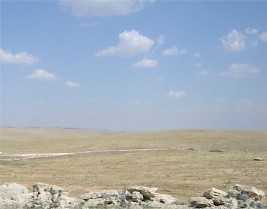
After the death of Alexander on 11 June 323, the city was contested by his successors: Perdiccas, Antigonus Monophthalmus, and Eumenes visited Edessa, but eventually, it became part of the realm of Seleucus I Nicator, the Seleucid empire, and capital of a province called Osrhoene (the Greek rendering of the old name Urhai). Antiochus IV Epiphanes settled Antiochians in the city, which was now called Antiochia too, but this name was forgotten.
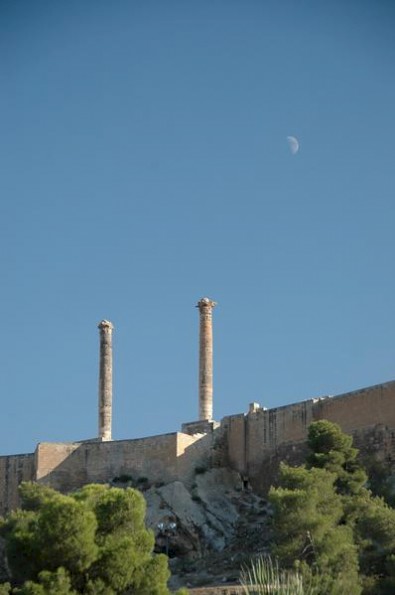
For a century-and-a-half, the town flourished, and it became independent when the Parthians occupied Babylonia. The Parthian and Seleucid kings were both happy with a buffer state, and the dynasty of the Arab Abgarides, technically a vassal of the Parthian "king of kings", was to rule Osrhoene for centuries.
In the first century BCE, the Seleucid empire collapsed and was gradually taken over by the Romans, who inherited the conflict with the Parthian empire. General Crassus invaded Osrhoene from the west but was defeated in 53 BCE by the Parthian leader Surena on the dusty plain of Edessa and Harran (the battle of Carrhae). The Romans blamed king Abgar II, who was replaced.
There were other campaigns between the two empires, and Osrhoene must have suffered badly, but it was able to retain its independence under its Abgaride kings, who were sometimes able to play a considerable role in the international politics. For example, in 49-50, Abgar V was an important actor in the struggle between the Parthian king Gotarzes II and his rival Meherdates.note
This independence came to an end by the 160s CE, when the Roman emperor Lucius Verus occupied northern Mesopotamia. From now on, the area was forced to be loyal to the Romans, although the outbreak of an epidemic prevented the annexation as a province. The reign of Commodus, who was not interested in foreign policy and conquest, prevented further Roman advance, but things changed in 193, when civil war broke out and the governor of Syria, Pescennius Niger, was supported by the Parthian kingdoms of Osrhoene and Adiabene in his bid for the imperial purple. When he was defeated by Septimius Severus (emperor from 193 to 211), full-scale war was inevitable.
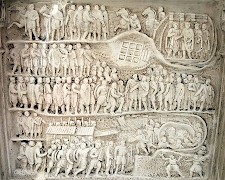
Abgar VIII first sided with the Romans, but later turned against them. In 195, the Romans liberated their eastern ally Nisibis from a siege by Adiabenes and Osrhoenians. After this success, Severus returned to Edessa and captured it. The events are shown on the triumphal Arch of Septimius Severus at the Roman forum. We can see how Edessa is attacked with siege engines (bottom) and Abgar surrenders (central scene). In the upper register, we see how Septimius Severus announces the annexation of Osrhoene and Nisibis. Abgar was pardoned and continued to rule until 212, although a procurator was to supervise his acts. Osrhoenians served as archers and cataphracts in the Roman army.
It is possible, but by no means certain, that Abgar VIII (or IX) converted to Christianity. (Later legend attributed the conversion to Saint Thaddaeus and Abgar V). As early as 197, a Christian council was organized in the city, and a famous paining of Christ, the "Mandylion", was later shown in Edessa, believed to be very old.
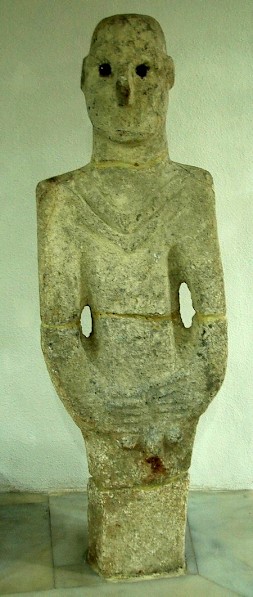
This is not surprising. Osrhoene was a religious melting pot, where the cult of Mesopotamian gods like Nabû and Bêl existed side by side with Syrian deities like Atargatis and Elagabal. The Jewish community was very important, and there is even a legend that king Abgar V exchanged letters with Jesus.
Severus' campaigns against Parthia were extremely successful. In fact, the eastern empire never recovered and was taken over by a renewed Persian empire, led by the Sasanian dynasty. Again, Osrhoene was a frontier zone, and the fall of the Abgarid dynasty seems to be connected with the ill-fated campaign of the emperor Gordian III against king Shapur I, in 244.
The city was reinforced by the Romans, but we don't know much about it. During the reign of Diocletian (284-305), a legion was stationed at Edessa, IIII Parthica. It was in this fort that bishop Servatius of Tongeren and the emperor Constantius II discussed the accession of the usurper Magnentius.
Meanwhile, Edessa was a very important center of Christianity, which decisively influenced the Syrian Church. In 363, when the Roman emperor Jovian ceded Nisibis to the Sasanians, its famous school was moved to Edessa, where "the school of the Persians" was to remain until 489. In that year, a part of this early university was closed because its teachers were deemed unorthodox. (They moved to Nisibis again.) Yet, Edessa remained a center of learning, even after it had been taken over by the Arabs in 638. To them, the old city had a special significance, because a local legend claimed that the prophet Ibrahim (Abraham) was born in a cave near the fortress of Edessa.
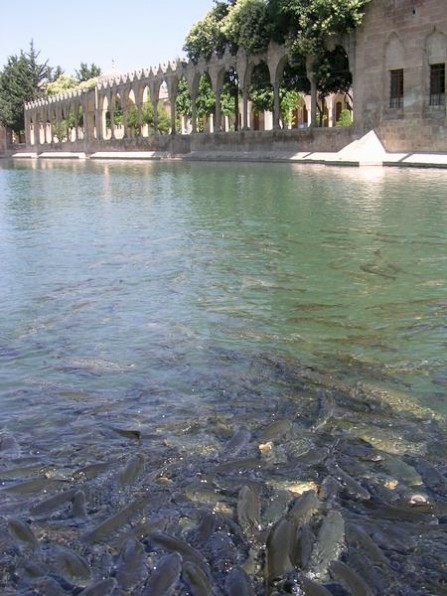
Another legend, originally Jewish but taken over by the Muslims, tells that the evil king Nimrod wanted to punish Ibrahim, and threw him from the citadel into the fire. The fire, however, changed into a pool of water and the logs of wood into fish, which are venerated until the present day by Sunnites and Shi'ites alike.
This may be an islamized version of an ancient Syrian cult, like the one mentioned by Xenophon.note In any case, the pond was already there in the fourth century, as it is mentioned by the Christian pilgrim Egeria, who mentions the pool in her travelogue.note
As a cult site, the place appears to be considerably older, as a Prehistoric statue was discovered just north of the pool. It can be dated to the Pre-Pottery Neolithic and must be some ten thousand years old. It is now in the city's archaeological museum.
